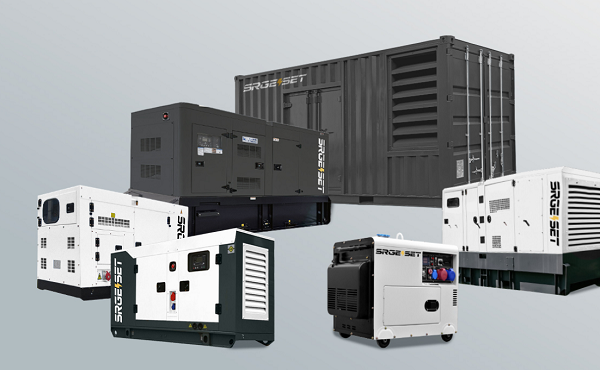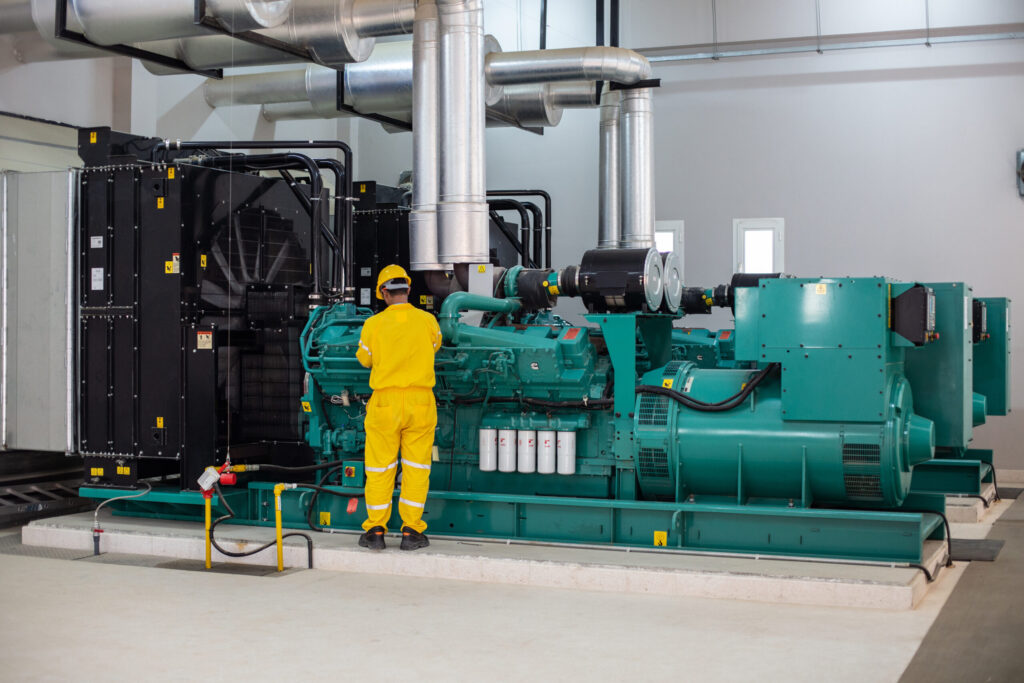Maintenance of Industrial Generators
As the “power heart” of industrial production, industrial generators provide stable power support for various types of equipment. From the automated production lines of large factories to the mining equipment in mines, their stable operation is crucial for production order, efficiency, and cost control. According to statistics, production interruptions caused by generator failures can bring direct economic losses of tens of thousands or even hundreds of thousands of yuan to enterprises each time. Therefore, doing a good job in the maintenance of generators is the key for enterprises to achieve sustainable development.

I. Importance of Maintenance of Industrial Generators
1.1 Ensuring the Stability of Power Supply
Industrial production has extremely high requirements for the stability of power supply. Voltage fluctuations and frequency changes may damage precision equipment and affect product quality. Regular maintenance can promptly solve problems such as voltage regulator failures and winding looseness, ensuring a stable power output. For example, in the electronic chip manufacturing industry, unstable power supply will lead to an increase in the defective rate of chips, while good maintenance can reduce this risk.
1.2 Reducing Failure Rates and Maintenance Costs
During long-term operation, generators may encounter failures due to component wear and aging. Regular maintenance can detect potential hidden dangers in advance, such as bearing wear and excessive brush consumption, and repair or replace components in a timely manner to prevent minor problems from developing into major failures, thus reducing maintenance costs. Studies have shown that the maintenance costs of regularly maintained generators can be 30% – 50% lower than those of generators without maintenance.
1.3 Extending the Service Life of Generators
Careful maintenance can keep the components of generators in good working condition, reducing wear and fatigue. For example, regular maintenance of the windings can prevent moisture ingress and insulation aging, extending the lifespan of both the windings and the entire generator. Generally speaking, the service life of a well-maintained generator can be extended by 2 – 3 years, saving equipment renewal costs for enterprises.
1.4 Improving Equipment Efficiency and Reducing Energy Consumption
A well-maintained generator has a smooth heat dissipation system and smooth component operation, resulting in higher energy conversion efficiency. Regularly cleaning the heat dissipation system and replacing the lubricating oil can increase the power generation efficiency by 5% – 10%, reducing energy consumption and achieving energy conservation and emission reduction.
1.5 Ensuring Production Safety and Avoiding Accidents
The operation of generators involves risks such as high temperature, high voltage, and strong electricity. Improper maintenance is likely to cause accidents such as fires and electric shocks. Regular maintenance can check the safety protection devices to ensure that they can cut off the power supply in a timely manner in case of abnormalities, safeguarding the safety of personnel and property.
II. Main Contents of Maintenance of Industrial Generators
2.1 Appearance Inspection and Cleaning
Regularly check whether the generator’s casing is damaged, deformed, or corroded. Clean the surface dust, oil stains, and debris, and keep the ventilation holes and heat sinks unobstructed to ensure good heat dissipation.
2.2 Fastener Inspection and Tightening
Check whether bolts, nuts, and other fasteners are loose, and tighten them according to the specified torque to prevent component displacement and increased friction. At the same time, observe whether the fasteners are damaged or rusted, and replace them in a timely manner.
2.3 Electrical Part Inspection
2.3.1 Terminal Inspection
Ensure that the terminals are firm and in good contact. Clean the surface oxides and dirt to ensure a reliable electrical connection, and check whether the insulation protection is intact.
2.3.2 Insulation Performance Inspection
Use an insulation resistance tester to regularly detect the insulation resistance of components such as windings and cables. If the resistance decreases, find the cause in a timely manner and take corresponding measures, such as drying the windings or replacing the insulating materials.
2.3.3 Control Panel Inspection
Check whether the buttons, switches, and indicator lights on the control panel are working properly. Repair or replace faulty components, and check whether the circuit boards and electronic components are damaged or corroded.
2.4 Mechanical Part Inspection and Lubrication
2.4.1 Bearing Inspection
Judge the running status of the bearings by listening to the sound and touching the temperature. When the bearings are severely worn or poorly lubricated, replace the bearings or replenish and replace the lubricating oil in a timely manner.
2.4.2 Gear Inspection
Check the wear, cracks, and spalling of the gears to ensure smooth meshing. Lubricate regularly and replace the gears when they are severely worn.
2.4.3 Drive Belt Inspection
Check the tension and wear of the drive belt, adjust the tension, and replace the drive belt with cracks or aging.
2.4.4 Lubrication System Maintenance
Regularly check the oil level and quality, clean or repair the oil pipes, oil pumps, and filters, and replace the lubricating oil and filters as required.
2.5 Cooling System Inspection and Maintenance
2.5.1 Cooling Liquid Level Inspection
Ensure that the coolant level is within the specified range, and add the required coolant if it is insufficient.
2.5.2 Cooler Cleaning
Regularly clean the dust and dirt on the surface of the cooler, check the scaling inside, and use a cleaning agent to clean it when necessary to improve the heat dissipation efficiency.
2.5.3 Cooling Fan Inspection
Check whether the fan blades are damaged or deformed and whether the operation is normal. Repair or replace the faulty fan and its driving device.
2.6 Control System Inspection
2.6.1 Starter Inspection
Check whether the starter is working properly, whether the start button is sensitive, and whether the starting circuit is unobstructed. Repair or replace faulty components.
2.6.2 Controller Inspection
Check whether the controller functions are normal and whether the displayed parameters are accurate. Repair or replace the faulty controller.
2.6.3 Protection Device Inspection
Regularly test the protection devices, simulate abnormal situations to ensure that they can act in a timely manner, check whether the set values meet the requirements, and adjust the connections to ensure reliability.
2.7 Maintenance Records and Reports
After each maintenance, record the content, time, replaced components, and other information in detail, prepare a maintenance report, file and save it, and establish a maintenance file to provide a basis for subsequent maintenance.
III. Setting of Maintenance Cycles for Industrial Generators
The maintenance of generators is divided into daily maintenance, quarterly maintenance, and annual maintenance. Daily maintenance is carried out every day or every shift, including appearance inspection and parameter monitoring; quarterly maintenance adds in-depth inspection items, such as tightening fasteners and measuring insulation resistance; annual maintenance conducts a comprehensive disassembly inspection, repairs or replaces worn components, and upgrades the control system. The actual maintenance cycle should be adjusted according to the operating environment and usage frequency.
IV. Common Problems and Solutions in the Maintenance of Industrial Generators

4.1 Generator Starting Failure
It may be caused by electrical failures (such as abnormal power connections, insufficient battery voltage, starter failures) or fuel supply problems (insufficient fuel, blocked pipelines, fuel pump failures). When solving the problem, it is necessary to check the electrical system and the fuel system and repair or replace the faulty components.
4.2 Generator Overheating
Overheating may be caused by cooling system failures (insufficient liquid level, blocked cooler, fan failure), lubrication system problems (insufficient oil quantity, poor oil quality), or excessive load. It is necessary to check the cooling and lubrication systems and adjust the load.
4.3 Unstable Generator Voltage
Generator voltage regulator failures, wiring problems, or uneven loads can lead to unstable voltage. The problem can be solved by checking the regulator, repairing the wiring, and adjusting the load.
The maintenance of industrial generators is a core link to ensure the stable operation of industrial production. Its importance is reflected in multiple aspects, including ensuring stable power supply, reducing failure rates, extending equipment lifespan, improving energy efficiency, and ensuring production safety. The main contents of maintenance cover many aspects, such as appearance cleaning, fastener inspection, maintenance of electrical and mechanical components, inspection of the cooling system and control system. Each task has a direct impact on the performance and reliability of the generator.
Reasonably setting the maintenance cycle is the key to maintaining the good condition of the generator. Daily, quarterly, and annual maintenance are progressive, and enterprises should adjust them flexibly according to the actual operation situation. In the face of common problems such as starting failure, overheating, and unstable voltage, it is necessary to accurately analyze the causes and take targeted solutions.
Through scientific and standardized maintenance, enterprises can not only reduce operating costs and improve production efficiency but also effectively avoid safety accidents and economic losses caused by generator failures. Industrial enterprises should attach great importance to the maintenance of generators, incorporate it into regular management, and lay a solid foundation for the continuous, stable, and efficient operation of industrial production.
